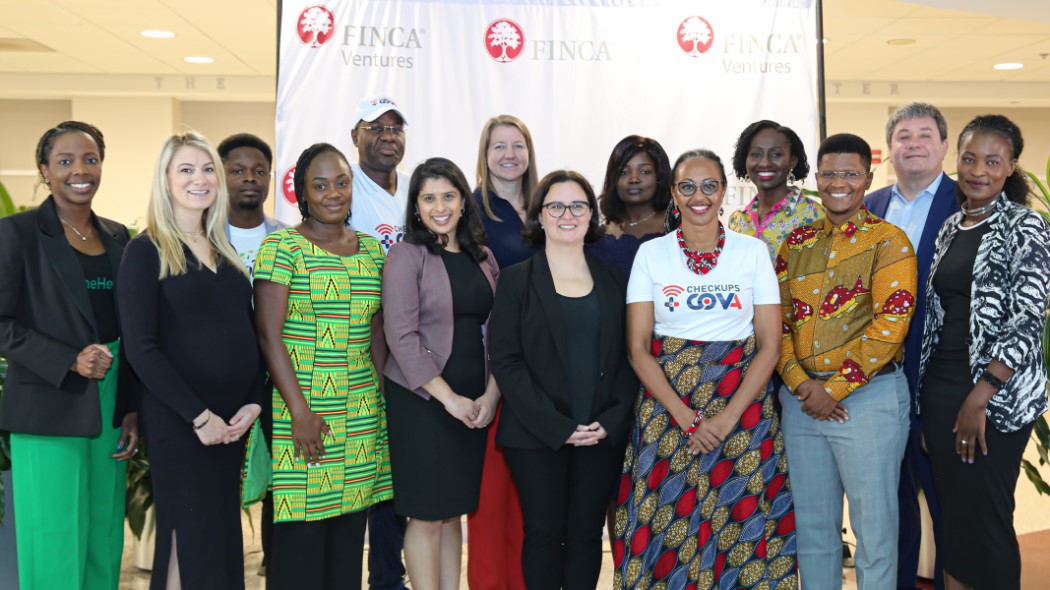The field of conservation finance is at an inflection point.
There is a long and distinguished list of conservation finance deals that have delivered important conservation benefits. As the field moves to the next stage, it will need to migrate beyond donor-driven financing to commercial, investor-driven vehicles. It will need to move from one-off transactions towards repeatable and scalable models of investing.
From its roots in NGOs, land trusts, and foundation and donor capital, we see growing interest conservation finance from institutional investors and intermediaries. These new investable transactions require an alignment of interests of buyers, regulators, NGOs, industry, and specific types of investors.
A two-day workshop from January 21-22, 2014, hosted by the Federal Reserve Bank of San Francisco, brought together leading practitioners to discuss successful conservation finance deals and innovative transactional structures.
The focus was on ideas that are scalable and repeatable and that generate returns for investors. The goal of the workshop was to facilitate the emergence of an investor-driven approach to conservation.
The steering committee, with representatives from Coady Diemar Partners, Equilibrium Capital, The Lyme Timber Company, and Credit Suisse thanks the Gordon and Betty Moore Foundation, the David and Lucile Packard Foundation and the San Francisco Federal Reserve for their generous support.
The workshop was the start of an exchange of ideas and new network of relationships, not the end. Participants took stock of the field and charted paths forward. New markets develop in stages. Conservation finance solutions and products are emerging over time and through the efforts of many players. That work lies ahead.
John Tobin Credit Suisse
CONSERVATION FINANCE IS MOVING UP THE ‘S CURVE’
Workshop participants grappled with the challenge of creating scalable projects and replicable business models that meet the needs of institutional investors.
Specific conservation markets and products are at different points along the ‘S curve’ from early-stage, even concessionary, capital to large-scale, market-rate finance. Wetlands mitigation banks are fully investable, for example; many fisheries and oceans projects, not yet.
For many participants, the workshop fell short of identifying fully investable deals. “Our best success stories are still working to achieve scale in institutional terms,” says Pat Coady of Coady Diemar Partners.
What projects are ready to move from concessionary financing to mainstream capital in the next 18-24 months?
WALL STREET IS INTERESTED
“We’re on the cusp of having the attention of institutional investors and that’s good news,” says Peter Stein of Lyme Timber. The representation at the workshop of Credit Suisse, JP Morgan and Goldman Sachs signals growing client demand and deal-making opportunities and conservation finance product development is a major opportunity for Wall Street banks in 2014.
On the eve of the workshop, Credit Suisse (with World Wildlife Fund and McKinsey & Co.) issued “Conservation Finance: Moving Beyond Donor Funding Toward an Investor-Driven Approach.” Goldman Sachs convened an Environmental Finance Innovation Summit in February. JP Morgan, The Nature Conservancy and EKO Asset Management, backed by the Moore and Packard foundations, will report on the size of the opportunity in a range of environmental markets later this year.
Wall Street “smells something going on,” says Dave Chen of Equilibrium Capital.
CONSERVATION NGOS AND INSTITUTIONAL FINANCE ARE COMING TOGETHER
Environmental and other non-governmental organizations are shifting from “Just Say No” to “Let’s Make a Deal.” But deeper connections are needed to break down silos. “The deep greens ask, ‘Is this really conservation?’” says Joe Whitworth of Freshwater Trust. “The finance guys ask, ‘Is this really finance?’”
Indeed, NGOs will require “a dramatic cultural shift,” says Eric Swanson of Forest Trends. “We need to deeply engage mainstream financial firms to reach the scale of investment needed to save the planet.”
EARLY-STAGE RISK CAPITAL IS CRUCIAL
“These deals are small and hairy and unfamiliar and therefore seem risky,” saysCharlotte Kaiser of The Nature Conservancy. “The need for patient, not short-term, money to buy down risk is beyond the capacity of the capital market to provide.”
Foundation funds can have a catalytic, multiplier effect; Susan Phinney Silver of the David and Lucile Packard Foundation cites Packard’s program-related investment, or PRI, for Ecotrust Forest Management that helped bring in New Island Capital Management as a commercial investor.
Tom Trinley of the Gaylord and Dorothy Donnelly Foundation suggests foundation investment committees could carve-out allocations of say, $10 million, for first-fund conservation finance managers. Fabian Huwyler of Credit Suisse calls for venture capital-style risk capital for conservation finance.
STANDARD BENCHMARKS WILL HELP DEFINE VALUES
The standardization of “currencies” that allow everyone to speak the same language will help build a broader investment base.
Benchmarks can help establish the value of specific benefits. What is the conservation equivalent of #2 Corn or West Texas Intermediate, wonders Dave Chen? Measuring the cost of kilocalories allows riparian restoration to compete with cooling towers, saysJoe Whitworth. Wetlands have similarly mature standards, notes Todd Gartner of World Resources Institute.
“With a more robust conversation, financiers can understand what you are financing,” says Kyung-Ah Park of Goldman Sachs.
POLICY CAN CREATE MARKETS AND CATALYZE CAPITAL
“The constraint on our business model is the availability of public money” to pay for conservation easements, says Peter Stein. The same is true for New Market Tax Credits, says Bettina von Hagen of Ecotrust Forest Management.
In contrast, regulatory frameworks for mitigation credits and offsets create a private-capital market without public funding. Developers seeking a more predictable permit process, “will pay for high-quality compensatory mitigation,” says Adam Davis of Ecosystem Investment Partners.
The U.S. Department of Agriculture is working to develop new ecosystem services markets through a half-dozen agencies, says Deputy Undersecretary Ann Mills, including with loan guarantees and demonstration projects to enhance financial incentives for conservation. Beyond wetlands, workshop participants are working on mitigation opportunities in the Endangered Species Act, water quality and nutrient management.
LOCAL VALUE-CREATION IS KEY
Workshop participants want to emphasize ‘working lands,’ not ‘forever wild.’
In the Brule-St. Croix Legacy Forest project, “Biodiversity couldn’t be mentioned, conservation easements couldn’t be mentioned,”Peter Stein says. “We had to focus on rural economic development.”
Freshwater Trust doesn’t emphasize watershed restoration to its local utility clients, says Joe Whitworth. “We just say, ‘In compliance. Saves money.’”
THERE IS PLENTY OF ROOM FOR NEW FINANCIAL PRODUCTS
Do we want more innovation, or less? To fit investors’ needs, conservation finance products need to be ‘plain vanilla,’ though creating and identifying cash flows requires considerable ingenuity.
Jennifer Pryce of the Calvert Foundation wants to know “how to use CDFI’s and fixed-income to channel money into land conservation.” Ben Vitale of Wastewater Capital Management wants to know “what can be done with loan guarantees, first-loss funds and other ways to de-risk investments.”
Kyung-Ah Park sees the need for third-party credit rating if we are to bring in institutional investors looking for investment grade, plain-vanilla opportunities and suggests a clearinghouse of conservation finance projects in the pipeline could more efficiently match interested investors with opportunities. Dave Chen sees a need for a merchant banking function for raises of $200-400 million.
Evan Smith of the Conservation Fund wants to explore ways conservation can monetize reduced government outlays, such as through better wildfire management. “Can we turn future avoided costs into something we can use now?”
INCUBATION OF NEW PRODUCTS AND FUNDS COULD ACCELERATE THE FIELD
An incubator could seed success stories and expand the deal pipeline. An “environmental finance capital alliance” could support first time fund managers with research and development, back office functions, standard-setting and other heavy lifting, Dave Chen says.
Lyme Timber, for example, seeded the first investments of Ecosystem Investment Partners. “That gave them a track record,” saysPeter Stein. An incubator could help mitigate a looming shortage of talent to structure projects, suggests Carl Palmer of Beartooth Capital.
“The range of skills to pull off these deals is pretty extraordinary,” Adam Davis says, requiring knowledge of conservation real estate, capital formation and the science of restoration.
KEEPING TRACK OF DEALS AND PRODUCTS WILL MEASURE AND VALIDATE PROGRESS
“Count those capital flows over time,” recommends Jim Levitt of Harvard Forest. “It’s boring, clerical and very important.”
A starting point could be an inventory of investable products, tagged by their position on the ‘S’ curve, suggests Logan Yonavjak, a Master of Forestry candidate at Yale University. Two good places to start are The Ecosystem Marketplace produced by Michael Jenkinsand his team at Forest Trends and the Summary of Natural Infrastructure Finance Mechanisms by Todd Gartner and team at WRI.
CREATING A MARKET WILL REQUIRE COLLABORATION — AND COMPETITION
Having three or four restaurants on a block can build business for everybody, notes Dave Chen.
As an example of collaborative field-building, Jennifer Pryce cites “gender lens investing,” which now can count 20 products in the capital markets and an ongoing conversation about “the women effect.”
Peter Stein suggests that many conservation finance players could take advantage of a common platform around policy, messaging, communications and monitoring of the field’s track record.
Fabian Huwyler warns that major financial competitors may not be keen to collaborate, even at this early stage.











